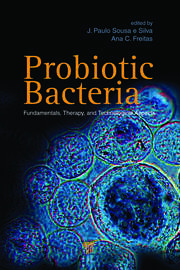ABSTRACT
The demand for functional foods has, over recent years, increased markedly (Siro et al., 2008). These foods, when include probiotics and prebiotics as biologically active components, produce metabolic and physiological health beneits in addition to their nutritional properties or at least enhance the normal homeostatic mechanisms in the intestine. Considering that scientiic evidences indicate that ingestion of some microbial strains provokes health beneits, which are extensively discussed in previous chapters, no clear indications exist about the effective dose for these strains; however, it has been consensual that high numbers of viable bacteria are recommended to assure probiotic foods eficiency. The viability and metabolic activity of probiotic microorganisms are important factors that should be controlled throughout processing operations, maturation
period and storage of the food. Furthermore, the amount of intake and form of the probiotic food should be adequate for dietary purposes. The most popular functional food products on the market are those designed for improvement of gut health, particularly those that contain probiotics (Siró et al., 2008). Probiotic bacteria are currently used to be incorporated in food products; however, some technological challenges must be faced when included in food matrices with more aggressive environments, namely high salt, acid or oxygen concentrations, or low temperatures. Nonetheless, in general, the beneicial effect of probiotic bacteria depends on its viability, requiring that food matrices as carriers assure their viability at high levels for entire shelf-life, to guarantee their passage throughout the gastrointestinal tract (GIT) and colonization of gut mucosa in order to exert beneicial effects. The aim of this chapter is to provide a comprehensive overview on the advances in probiotic food, covering the technological issues, functionality aspects, and limitations of some foods as carriers of probiotics.


